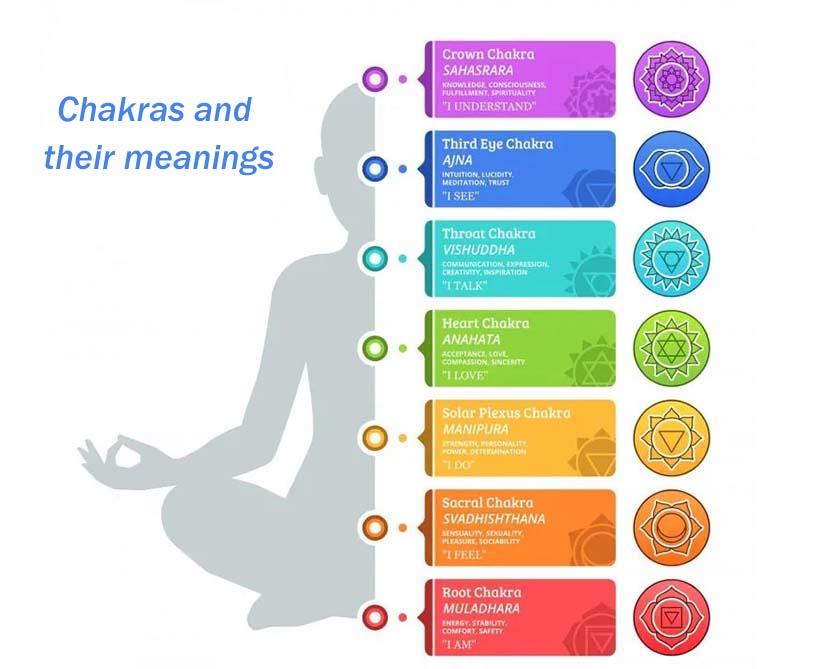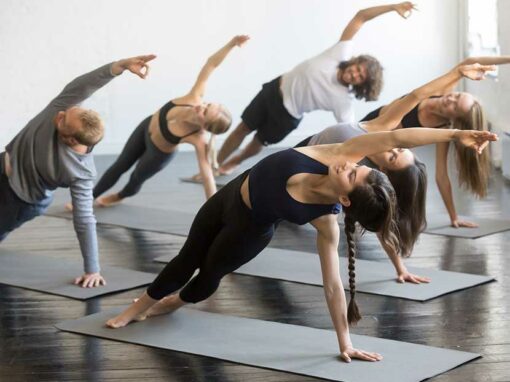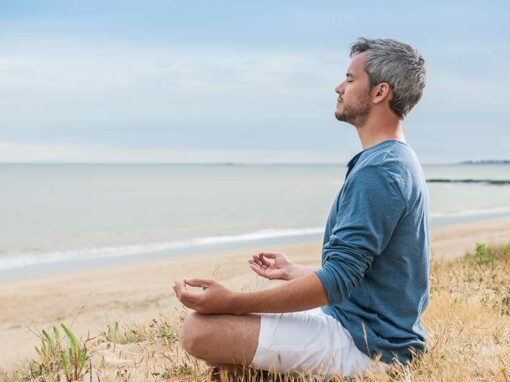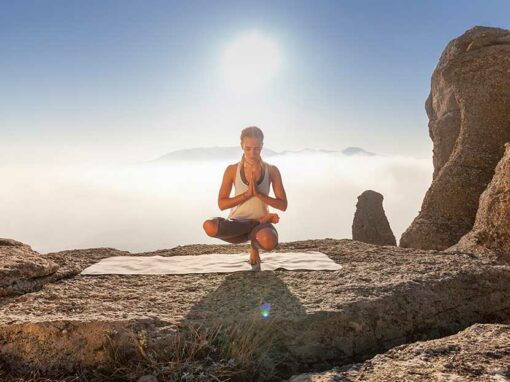Seats Of Energy Consciousness
I must admit that it’s been quite hard to understand and feel the chakra system.
Like many things in yoga that cannot be physically located, x-rayed, or detected, I spent years feeling like nothing was “happening”.
Chakra in Sanskrit is translated as wheel but there are numerous contrasting views about what they are, how they work, and even their number.
The most widely accepted model is the tantric model, giving seven chakras described as emanations of divine consciousness.
What Are The Chakras?
The teacher and scholar Christopher Wallis explains:
“The chakras aren’t like organs in the physical body; they aren’t fixed facts that we can study like doctors study neural ganglia.


The energy body is an extraordinarily fluid reality, as we should expect of anything nonphysical and supersensuous.
The energy body can present, experientially speaking, with any number of energy centers, depending on the person and the yogic practice they’re performing.”
Much of that is taught about chakras by Western yoga teachers involves practices that have been co-opted from references to old traditional texts, overlaid with modern Western psychological states innovated by Carl Jung in the 1930’s, with very little relevance to the culturally specific context from which the original practices were born.
Dr. Wallis said: “nothing written in English is really authoritative for practitioners of yoga.
Let’s admit we really don’t understand these ancient yoga practices yet; you can invite yourself to look more clearly, more honestly, more carefully, and less judgmentally at your own inner experience.”
Chakras Are Personal And Unique To Every Individual
Chakras, like yoga itself, are very personal and unique to the individual.
To appreciate what exactly they are and how they work within you involves creating an image of them in your mind and applying your unique understanding of them.
Step back from what you think you know about chakras and be more present and intimate with your own inner experiences.
You may recognize contractions in areas like the hips, pelvic floor, diaphragm, or throat that could sap your energy.
These contractions may be unresolved past experiences that shape our relationship to the body and its health in the present.
Iyengar used to say: “The practice of yoga is directed at awakening the divine energy within every human being. Asanas and Pranayama uncoil and alert the chakras. In the process, the nadis are activated.
This causes the chakras to vibrate and generate energy, which is then circulated all over the body through the nadis. The emotions rooted in the chakras are transformed as divine energies awakened and circulated.”
Many visualizations develop the idea of chakras as whirling vortexes of colored energy or light, and the symbol representing the chakras is the lotus blossom.
Each chakra is represented by a different color and a different number of petals.
The chakras behave like the petals of the lotus flower: they can be opened or closed depending on the state of consciousness.


Chakra Colors And Meanings
Chakra 1 – Root Chakra – Muladhara (Red Chakra)
Located at the base of the spine. It’s associated with stability, survival, comfort, safety. Its element is earth and the color is red. It has 4 petals.
Chakra 2 – Sacral Chakra – Svadhishthana (Orange chakra)
Located in the lower abdomen. It’s associated with sensuality, pleasure, creativity, sociability, and emotions. Its element is water and the color is orange. It has 6 petals.
Chakra 3 – Solar Plexus Chakra – Manipura (Yellow Chakra)
Located in the navel area. It is associated with strength, personality, power, determination, and self-esteem. Its element is fire and the color is yellow. It has 10 petals.
Chakra 4 – Heart Chakra – Anahata (Green Chakra)
Located in the middle of the chest, over the sternum. It’s associated with love, acceptance, compassion, and sincerity. Its element is air and the color is green. It has 12 petals.
Chakra 5 – Throat Chakra – Vishuddha (Blue Chakra)
Located in the throat area. It’s associated with communication, expression, inspiration. Its element is ether and the color is blue. It has 16 petals.
Chakra 6 – Third eye Chakra – Ajna (Indigo Chakra)
Located in the middle of the forehead. It’s associated with intuition, lucidity, meditation, and trust. Its element is light and the color is indigo. It has 2 petals.
Chakra 7 – Crown Chakra – Sahasrara (Purple Chakra)
Located at the top of the head. It’s associated with knowledge, consciousness, spirituality. Its element is thought and the color is violet, or sometimes white. It has 1.000 petals.


Chakra Meditation
Inspired by Peter Sterios, I experimented his approach to meditating over the chakras.
His focus is not on colors, locations, mantra, but it’s more tangible.
After an asana practice, I took a comfortable, seated, cross-legged position and began focusing first on the pelvic floor.
I visualized my breath inhalation filling into my rectum and gently pressing the perineum into the floor (the gateway to the 1st chakra).
On the exhalation, I moved my attention to softening my pelvic floor and sphincter muscles.
Then I moved my attention up through the back, softening the skin below my navel (gateway to the 2nd chakra), my diaphragm (3rd chakra), the top of my lungs and sternum (4th chakra), the root of the throat and thyroid gland (5th chakra), the muscles behind my eyes and the frontal lobe tissues of the brain (6th chakra).
Peter left out the last chakra because he says: “it felt beyond my understanding of what I was drawn to do.”
It looks to me like a very humble, respectful, and realistic approach.
In this way, we have the opportunity to develop a relationship with parts of our physical body that are “real” for us and direct the soften, warm, and releasing energy when we exhale to a tight muscle or injured joint.
What Does It Feel Like When Your Chakras Open
The overall feeling I experienced at the end was a sense of lightness, the energy released, space in the body and in the mind.
In this light, we can see the possibility to have a different approach to our emotional triggers, they are actually opportunities to reset our mindset.
If we suspend the need to judge or react, we can reframe the way we respond, not based on past experiences, but based on what is true now.
Trust your inner intelligence and you will find your own way to let the chakras heal you.


Sources:
- Gravity & Grace by Peter Sterios
Marianna has been practicing Yoga for more than eight years, and in 2020
she completed the 200h Yoga Teacher Training in Vinyasa at YogaMoves in Utrecht.
She is passionate about sharing Yoga with others, living more sustainably,
and traveling. Here is her INSTAGRAM page.




